- Overview
- Full Itinerary
- Photo Gallery
- Costing
- Travel Details
- Trip Reports
- Guide
- Know Before You Go
- Other Trips You May Like
Join Naturalist Journeys’ owner Peg Abbott, on this Tanzania wildlife safari to see the splendor of East African birds alongside iconic animals like Elephant, Wildebeest, Common Zebra, Buffalo, Impala, Gazelle, Hartebeest, Eland, Lion, Cheetah, Leopard, Spotted Hyena, Vervet Monkey, Baboon, and so many more. Travel at peak time: Wildebeest are calving and the interactions between predator and prey are intense.
We begin in Arusha, followed by time at Arusha and Lake Manyara National Parks, then five nights at comfortable safari camps so close to the action. Explore at Oldupai Gorge and the wildlife heavy Ngorongoro Crater. Finally witness the splendor of Tarangire National Park, perched on a principal migration corridor into the Serengeti; this is what wildlife documentaries are made of.
Throughout our exploration, learn about the Great Rift Valley and the whole area’s fascinating geology. Central to our journey is ample time in the Serengeti eco-system. With its endless plains, the Serengeti is the heart and soul of our African wilderness experience.
“Throughout the journey, you are immersed in the splendor of wildlife, both mammals and birds, and our timing is set for the peak of the great Wildebeest migration. Because of this timing, we must confirm our tour early; we visit at PRIME time! East Africa is still the ultimate safari experience, hands down.”
— Peg Abbott, Owner of Naturalist Journeys




Tour Highlights
- Witness spectacular concentrations of wildlife at seasonally shrinking watering holes; watch interactions between predator and prey
- Discover Lake Manyara National Park, home to tree climbing Lion, enormous tusked Elephant, Bushbuck, Giraffe, Zebra, Buffalo, Leopard, Impala, and more
- Enjoy two nights at Gibbs Farm immersed in lush forests that shoulder Ngorongoro Crater
- Spend three nights at Tarangire National Park, with picturesque and ancient Baobabs and many elephants
- Search for fascinating birds in the Serengeti, like Hamerkop, Saddle-billed and African Openbill Storks, Lappet-faced Vulture, and Tawny and Martial Eagles
- Find big cats and watch their behavior; in the last years we have seen all the big cats, plus in some years, Serval and Caracal
- Visit Oldupai Gorge with a local guide, and learn about the sequence of important anthropological finds
- Opt for a sunrise hot air balloon ride over the Serengeti — wow!
- Absorb the view from the rim of Ngorongoro Crater, then venture into the crater with its teeming wildlife
- Witness the rare Black Rhino in Ngorongoro Crater, as well as many bull Elephant




Trip Itinerary
Itineraries are guidelines; variations in itinerary may occur to account for weather, road conditions, closures, etc. and to maximize your experience.
Tues., Feb. 11 Arrival in Arusha | Ngare Sero Mountain Lodge
Welcome to Tanzania! Our tour begins in Arusha, where on arrival you find your first Superb Starling, and say, “why didn’t we get that one!”. The sounds and smells of Africa, including blooming jacaranda trees await. We have selected a hotel out of the city so you can immediately surround yourself with splendid views, wildlife such as Dik-dik, Vervet Monkey and Mantled Guereza (Black-and-white Colobus Monkey), and bountiful birds, from bee-eaters to barbets, Crowned Hornbill, Hadada Ibis, Brown-hooded Kingfisher, and more.
You may want to come in an additional night to rest up from travels. The lodge has extensive tropical plantings and is small and personal. There is a lovely swimming pool, WiFi, bar, spa and dining facilities, and pathways. Whenever you chose to arrive, this is a restful location to welcome you.
Both early arrivals and those coming in on the tour start date are met and transferred on arrival to the hotel.
Accommodations at the Ngare Sero Mountain Lodge (D)
Wed., Feb. 12 Arusha National Park
The enthusiasm for this lovely park on the shoulder of Mt. Kilimanjaro was so high on past tours that we added it into our safari as a great way to begin. In 4WD vehicles we explore forests and lakes to see a host of wildlife. We may even walk with ranger guides to see some of the wildlife up close and personal. Warthog, Giraffe, Impala, Zebra, several species of monkeys, and a host of birds, including Greater and Lesser Flamingoes are all possible. We take a picnic lunch with us and make the most of the day.
The grounds of our hotel are equally fascinating for birding, with hornbills, barbets, weavers, and sunbirds enjoying the tall shade trees and flowering gardens. We return here in the afternoon and enjoy the sunset, happy hour, and a chance to tally up our sightings ahead of a delicious meal.
Accommodations at Ngare Sero Mountain Lodge (B,L,D)
Thurs., Feb. 13 Morning Birding At The Lodge | Tanzanite Crafts Store | To Ngorongoro
We enjoy morning birding at the lodge before setting off to Ngorongoro Crater. En route we stop at the Tanzanite Crafts Store. Our lovely lodge is a comfortable place to settle in. Relax and enjoy birding the grounds. Meals are served in the historic dining room, with lovely views and memorable hospitality. Your rooms have a patio facing the crater. Maasai villagers bring their beautiful beadwork and provide evening dancing and showcase feats of acrobatics.
Accommodations at Serena Ngorongoro (B,L,D)
Fri., Feb. 14 Ngorongoro Crater
As we reach Ngorongoro Crater, we witness a landscape that is spectacular to view from above and below. Your first view from the rim down into this fabled crater is unforgettable!. After settling in, we spend the late afternoon birding and watching for wildlife from the rim, finding such beauties as Golden-winged Sunbird. Our lodge is a maze of rock and timbers that blends in perfectly with the rim environment.
Early this morning we descend into the crater, taking a picnic lunch. The Ngorongoro Crater and the Ngorongoro Conservation Area are, without a doubt, some of the most beautiful parts of Tanzania, steeped in history and teeming with wildlife. This protected area is located in the Great Rift Valley and is also known as the eighth wonder of the world. The Crater is actually a gigantic fracture in the earth's crust, consisting of volcanoes, mountains, plains, lakes, forests, and archaeological sites.
At 1600 meters (approximately 5200 ft.) above sea level, the bottom of the Crater is extensive, measuring 265 km (102 miles) square. It is dotted with watering holes and offers shelter to almost 30,000 individual animals in an area naturally enclosed by the slopes of the volcano. It is hard to find this density of mixed mammal species anywhere else in the world. The bird life is largely seasonal and is also affected by the ratio of soda and fresh water on the crater floor. Expect species such as Hildebrandt’s Francolin, Grey Crowned Crane, Fan-tailed Widowbird, Lyne’s Cisticola, Pied Avocet, Yellow-throated Sandgrouse, Black-bellied Bustard, Kori Bustard, Secretarybird, Rosy-breasted Longclaw, Lesser Flamingo, Greater Flamingo, Chestnut-banded Plover, and Rufous-tailed Weaver. We observe the behavior of the abundant wildlife: Lion, Zebra, Hippo, Buffalo, Warthog, Dung Beetle, and Eland are just a few. Considerable research has been done at Ngorongoro and we relate this as we drive. The crater’s Elephant are, strangely, mainly bulls. There are also a small number of rare Black Rhino.
We stay there in the crater until mid-afternoon, then head back to our lovely hotel on the rim. Those that wish to keep birding can enjoy some of the mountain species, such as Black-fronted Bush-Shrike, Oriole Finch, Schalow’s Turaco, African Olive Pigeon, Hunter’s Cisticola, Bar-throated Apalis, Red-collared Widowbird, Rameron Pigeon, White-eyed Slaty Flycatcher, and others new for our route, on the hotel grounds.
Accommodations at Ngorongoro Serena Lodge (B,L,D)
Sat., Feb. 15 To Ndutu | A Special Region of the Serengeti Ecosystem
This morning we work our way to Ndutu, part of the conservation area adjacent to Serengeti National Park. through an arid area, with fabulous scenery, geology, and impressive bird species, from wheatears to three species of sandgrouse and the elegant Kori Bustard. At the junction with Serengeti National Park, we veer south to the prime calving area for Wildebeest, on the mineral-rich soils of Ndutu, where wildlife watching abounds! We have three nights here, often one of the highlights of our journey.
Accommodations at Gnu Mobile Migration Tented Camp (B,L,D)
Sun., Feb. 16 & Mon., Feb. 17 Ndutu—The Place to Be in February!
The Ndutu area is part of the Serengeti but administered as part of the large and vital Ngorongoro Conservation Area. It is the end of the line for the Wildebeest migration on the Tanzania end (the Mara, in Kenya being the other end, at its peak in August/September) and they roam here in numbers that you just have to see to believe!
As far as your eye can see, Wildebeest may be running, feeding, fretting over newborn calves, and keeping an eye out for predators. Vast numbers of prey invite predators and no two days are alike. Leopard, Cheetah, Lion, and other cats are all possible. Both days we enjoy very extensive game and bird viewing drives in the morning and afternoon. We are in the heart of the action—the areas we explore are prime for Wildebeest calving; the circle of life is astounding. We often find a kill made before dawn, and watch as vultures, Jackal, and other scavengers wait their turn for the Lion to be done.
Our camp is wonderful, small with a fine sense of hospitality, and you are in the right place—ask any wildlife photographer where they love to go, and Ndutu or nearby Lake Masek are likely high on their list! For birders it’s also a wonderland, with Taita Fiscal, Magpie Shrike, Southern Ground Hornbill, Bare-faced Go-Away-Bird, Chestnut-bellied Sandgrouse, African Penduline Tit, Blue-capped Cordon-bleu, Southern Grosbeak Canary, Red-throated Tit, Short-tailed Lark, Silverbird, Black-lored Babbler, Black Bishop, Two-banded Courser, and many, many more.
Accommodations at Gnu Mobile Migration Tented Camp (B,L,D)
Tues., Feb. 18 & Wed., Feb. 19 Central Serengeti National Park
The Serengeti boasts a unique combination of diverse habitats, enabling it to support species of large herbivores, as well as birds. Its landscape includes open grass plains, savannah with scattered acacia trees in the center, wooded grassland, and black clay plains. Small rivers and swamps are scattered throughout. Kopjes are scenic knolls of granite and gneiss outcroppings, great for birds of prey and mammalian predators that use them for resting, nesting, and dens; they are also great for seeing smaller mammals. Central Serengeti holds ecological richness, and healthy numbers of predators, including Lion, Leopard, Cheetah, and smaller cats as well.
Serengeti National Park is undoubtedly the best-known wildlife sanctuary in the world, unequalled in its natural beauty and scientific value. With great concentrations of Wildebeest, Thomson’s Gazelle, Zebra, and many other herbivores, Serengeti forms the greatest view of plains game in Africa and has long been a natural classroom for wildlife biologists, many of whom reside here for years. The visitor center has excellent displays to highlight its iconic wildlife spectacle — the annual Serengeti migration.
Birding is also legendary in the Serengeti, and in between mammal sightings we find dozens of species! Over 500 species have been recorded, with 53 birds of prey and Secretary Bird among them. Some of the memorable species include colorful Saddle-billed Stork, African Openbill Stork, Lappet-faced Vulture, Tawny and Martial Eagles, Kori Bustard, Meyer’s Parrot, Black Coucal, Swahili Sparrow, Verreaux’s Eagle Owl, Malachite and African Pygmy Kingfishers, Rosy-breasted Longclaw, Chinspot Batis, Fork-tailed Drongo, Beautiful Sunbird, Golden-breasted Bunting, and so many more!
While in the Serengeti, we can arrange a hot-air balloon ride for you (an additional cost), timed to watch the sun rise as you drift over the plains, filled at this time of year with wildlife—this is pretty wonderful! Our lodgings also have an expansive view—including one from your luxury open-air shower!
Just opened in 2016, Kubu Kubu is a premium permanent tented camp with stunning vistas of the Serengeti Plains. This camp provides a wonderful blend of nature and creature comforts, including a pool. Rooms are spacious with a wooden deck with views and comfortable seating. You even have a view from your indoor/outdoor shower! Fischer’s Lovebird and a variety of songbirds that may include Purple Grenadier, Grey-capped Social Weaver, Red-cheeked Cordon-Bleu, and Red-billed Firefinch gather in acacia trees just off your patios; wake up calls compliments of Africa.
Accommodations for two nights at Kubu Kubu Camp (B,L,D)
Thurs., Feb. 20 Oldupai Gorge | Gibb’s Farm
This morning we enjoy a morning game drive as we work our way to the gate, departing Serengeti. We enjoy a picnic lunch and a visit to the world-famous Oldupai Gorge. The Gorge is famous for the study of human evolution and one of the most significant anthropological sites in the world. A local guide helps us understand the sequence of important finds here. This is an arid area, with fabulous scenery, geology, and colorful bird species, in addition to its renowned history. A recently-expanded museum here has excellent exhibits.
We drive to Gibb’s Farm this afternoon, located near the local town of Karatu. This is a local multi-faceted farm that grows coffee, fruits, flowers, and vegetables and also rears a variety of domestic livestock. We spend the afternoon exploring the grounds and the highland forest trails for birds such as Crested Guineafowl, White-tailed Blue-Flycatcher, Arrow-marked Babbler, Narina Trogon, Brown-headed Apalis, Eastern Mountain-Greenbul, Schalow’s Turaco, and White-browed Robin-Chat. It can be a veritable explosion of birds; with tall trees, it’s a great place for woodpeckers and barbets, hornbills, and possibly one of two species of trogons.
Accommodations at Gibb’s Farm (B,L,D)
Fri., Feb. 21 Lake Manyara National Park in Tanzania’s Rift Valley | Gibb’s Farm
We spend a full morning exploring Lake Manyara National Park, one of the region’s Great Rift Valley lakes. The park holds an expanse of woodlands and vast plains, as well as the large alkaline soda lake that attracts such a rich variety of waterfowl, perhaps the world’s tallest heron, aptly named the Goliath. The acacia trees and shrubs are home to tree climbing Lion, enormous tusked Elephant, Bushbuck, Giraffe, Zebra, Buffalo, Leopard, Impala, and other mammals. We learn more about the area’s geology from the Mto Wa Mbu escarpment, from which we overlook the Rift Valley and the Manyara Soda Lake.
One of the great features of Lake Manyara, situated in the Great Rift Valley, is the birding at the lake; both numbers and species are a highlight. Near the visitor center we may find a massive colony of Yellow-billed Stork, active in courtship and nest building. At a marshy area of the lake, we watch Hippo alongside African Jacana, numerous plovers, and handsome storks.
Manyara is a large alkaline lake and can attract large numbers of Lesser Flamingo and other waterbirds. The lake and wetlands teem with species, including Pied Kingfisher, Hamerkop, African Fish Eagle, African Spoonbill, Great White Pelican, Lesser Kestrel, Crested Guineafowl, a variety of hornbills, woodpeckers, and other species.
We return to the farm for a relaxed afternoon of birding and perhaps enjoy a dip in the pool!
Accommodations at Gibb’s Farm (B,L,D)
Sat., Feb. 22 Burunge Wildlife Area & Tented Lodge
Today we pass through Karatu town where we can find supplies, ATM machines, and modern conveniences. There are several shops with local crafts and art if we wish to stop – a great way to reach out to local people. From here we head back to the wilds, this time adjacent to the west side of Tarangire National Park in a wildlife area along a lakeshore. The birding here is excellent and we have a grand patio to gather on. A small freshwater hole attracts Elephants and the bird show is never-ending with colorful songbirds and species like Red-chested Cuckoo.
Accommodations at Burenge Tented Camp (B,L,D)
Sun., Feb. 23 & Mon., Feb. 24 Tarangire Safari Lodge | Tarangire National Park
The Tarangire Safari Lodge is perched on a principal migration corridor into the Serengeti, about 100 miles from Arusha. Ancient boulders and baobab and fig trees surround us in this stunning landscape. At the park gate, Yellow-collared Lovebird, Red-chested Cuckoo, and Pearl-spotted Owlet may be among the welcoming committee.
Tarangire is home to one of the largest Elephant populations in Tanzania. February is baby time, irresistible! Because of varied habitats, it is a bird lover’s paradise, home to 550 bird varieties, the most breeding species in one habitat anywhere in the world. Lush marshes provide home to bishops, queleas, and whydahs. Birds of prey abound and the endemic Ashy Starling becomes an easy find.
In Tarangire we expect to see many Elephant and other wildlife like Wildebeest, Common Zebra, Buffalo, several mongoose species, Impala, Gazelle, Hartebeest, Eland, Lion, Cheetah, Leopard, Spotted Hyena, Vervet Monkey, Baboon, and many more. No two days are alike on safari, but every day holds tremendous wildlife viewing, often at close range in this lush and fanciful landscape.
The bird life in Tarangire includes many species associated with the trees, including woodpeckers, barbets, sandgrouse, and numerous songbirds. Red-and-yellow Barbet is common as are Tanzanian Red-billed Hornbill. The view from the patio of our lodge is one of the grandest in the region and the perfect spot for a sunset cocktail
with time to recount the day’s highlights as elegant-necked Giraffe walk by. An optional night drive here with a local guide reveals some impressive night birds including nightjars, owls, and possible courses.
Accommodations both nights at Tarangire Safari Lodge (B,L,D)
Tues., Feb. 25 Return to Arusha | Departures
We enjoy some final morning birding around the lodge before departing for Arusha. Once on the road we go fairly directly so we can dine together one last time with a fine lunch in Arusha before we drop off at the Kilimanjaro Airport for afternoon departures. For those that have later flights, you can relax at the hotel we dine at; if you don’t fly out until the next morning you can check into a room and enjoy the patio and some time to repack or relax. (B,L)
Cost of the Journey
Cost of the 15-Day / 14-Night Tanzania trip (main tour) is per person, based on occupancy: $11,300 DBL / $12,900 SGL from Arusha, Tanzania. This cost includes accommodations for 14 nights, all meals as specified in the itinerary, professional guide services, other park and program entrance fees and miscellaneous program expenses.
Tour costs do not include round-trip transportation from your home city to Arusha, optional activities, or items of a personal nature such as laundry, telephone charges, gratuities for guides, lodges and drivers, or beverages from the bar; personal, medical, cancellation insurance. Optional activities such as the hot air balloon ride can be booked onto the main safari (extra cost), best to plan in advance to secure space, by the final payment due date is recommended.
Travel Details
Please plan to make air travel plans only after the minimum group size has been met. We will send you a confirmation email as soon as the trip has been confirmed.
Plan to arrive in Arusha, Kilimanjaro International Airport (JRO) no later than February 11, though we recommend you come in at least a day early.
Please plan departure flights after 5:00 PM on February 25; we plan to arrive at the airport by 2:00 PM or as needed to connect to flights out.
We offer the service of our travel agent, Willamette Travel, to help you plan and book flights and we cover the base ticket fee as an added value to travel with Naturalist Journeys. If you arrive early to Arusha (main safari only), we can book extra nights for you at the Ngare Sero Lodge.
Entry Requirements: See "Essential Information" section under the "Know Before You Go” tab.
Browse below for trip reports and species lists from past versions of this and other tours from this destination.
Tanzania
- February 2017
- February 2018
- February 2019
- February 2020
- February 2023
- February 2024
Southern Tanzania
- September 2023
-
Peg Abbott

Peg Abbott is the owner and lead guide of Naturalist Journeys, LLC. She has been designing, guiding, and organizing natural history tours for more than 25 years, working for the National Audubon Society and other organizations before launching Naturalist Journeys, LLC in 1998. Her work has taken her from Alaska to Africa and Argentina, as well as many other locations around the world. She has conducted research on several bird and mammal species and keeps a close interest in Yellowstone and Mexican wolf reintroduction projects. Her interests include all aspects of natural history and geology. After 20 years in and around the Yellowstone area, Peg relocated in 2003 to the birding mecca of Portal, AZ.
Photo credit: Carol Simon
Other trips with Peg Abbott
-
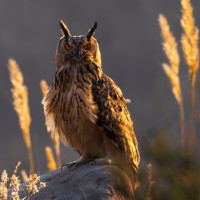 Wild Italy: Venice, the Dolomites, and Bologna CLOSED - Check out Romania & Bulgaria: Black Sea Coast Migration!May 18 - 30, 2025
Wild Italy: Venice, the Dolomites, and Bologna CLOSED - Check out Romania & Bulgaria: Black Sea Coast Migration!May 18 - 30, 2025 -
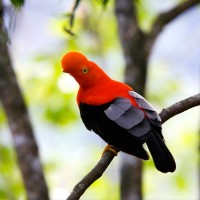 Incredible Ecuador: Chocó GaloreOctober 2 - 11, 2025
Incredible Ecuador: Chocó GaloreOctober 2 - 11, 2025 -
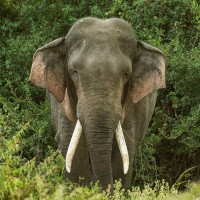 Island of Wonder: Birds & Nature of Sri Lanka FULL - Check out Wild Borneo: Endemic Birding & Nature!November 10 - 22, 2025, w/Mannar Island extension
Island of Wonder: Birds & Nature of Sri Lanka FULL - Check out Wild Borneo: Endemic Birding & Nature!November 10 - 22, 2025, w/Mannar Island extension -
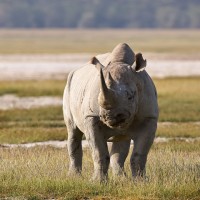 Tanzania: Wildlife & Birding Safari FULL - Check out Southern Tanzania in September 2025!February 9 - 22, 2026, w/Amboseli & Nairobi National Parks extension
Tanzania: Wildlife & Birding Safari FULL - Check out Southern Tanzania in September 2025!February 9 - 22, 2026, w/Amboseli & Nairobi National Parks extension -
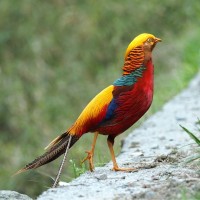 China’s Sichuan Basin & Tibetan Plateau Birding, Wildlife & CultureJune 11 - 26, 2026
China’s Sichuan Basin & Tibetan Plateau Birding, Wildlife & CultureJune 11 - 26, 2026
-
Essential Information +
Pace & Protocols +
Packing List +
Suggested Reading List +
Useful Links +
Photo credits: Banners: Elephants by Peg Abbott; Saddle-billed by Greg Smith; Africa Pygmy Kingfisher, by Gisela Gerson Lohman-Braun; Wildebeest and Zebra by Peg Abbott; Giraffes under Baobab by Peg Abbott; Leopard by Greg Smith; African Fish Eagle, Crowned Crane, Elephant with Infant, Lion Cub, Yellow-billed Stork Rookery, Zebra Greeting, European Bee-eater, Wildebeest and Calf by Peg Abbott; Secretary Bird, Peg Abbott; African Hoopoe, Peg Abbott; Knob-billed Duck, Peg Abbott; Yellow-necked Spurfowl, Peg Abbott; Gazelle, Peg Abbott; Malachite Kingfisher, Peg Abbott; Red-billed Hornbill, Greg Smith; Arusha National Park, Peg Abbott; Striped Kingfisher, Peg Abbott; Black-and-white Colobus, Peg Abbott; Lilac-breasted Roller, Peg Abbott; Ndutu Sunrise, Peg Abbott; Zebra, Peg Abbott; Wildebeest, Peg Abbott; Kori Bustard, Peg Abbott; Tawny Eagle, Peg Abbott; Red-cheeked Cordon-blue, Peg Abbott; Fork-tailed Drongo, Peg Abbott; Rosy-breasted Longclaw, Peg Abbott; Bar-throated Apalis, George Bakken; Giraffe, Peg Abbott; African Fish Eagle, Peg Abbott; Chestnut-bellied Sandgrouse, Washington Wachira; Saddle-billed Stork, Peg Abbott; Greater Flamingo, Bob Rodrigues; Chestnut-banded Plover, Bob Rodrigues; Bat-eared Fox, Peg Abbott; Blue-cheeked Bee-eater, Peg Abbott; Brown-crowned Tchagra, Peg Abbott; Crowned Crane, Peg Abbott; Hammerkop, Peg Abbott; Helmeted Guineafowl, Peg Abbott; Ostrich, Peg Abbott; Red-billed Oxpecker, Peg Abbott; Sandgrouse, Peg Abbott; Yellow-billed Stork, Peg Abbott; Red-headed Barbet, Peg Abbott.





















